 Linna examining Prehnite |
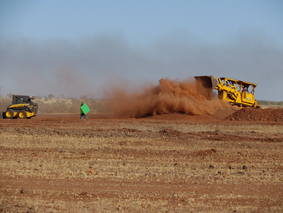 Mining Prehnite |
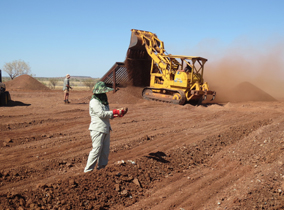 Linna examining Prehnite |
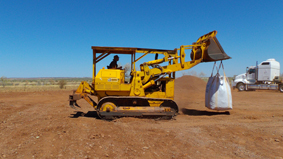 Loading Bulka Bags |
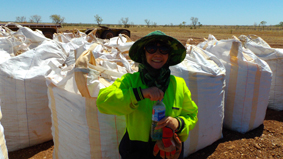 Linna taking a break |
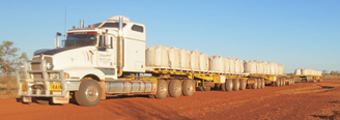 Get a load of this! |
|
Contact Us Australian Gem Industry AUSTRALIAN PREHNITE Beads Cabochon Jewellery Chrysoprase Rough Cut Gemstones Fashion Jewellery Gemstone Carvings Gemstone Jewellery Gemstone Rough History Of Jade Jade - Jadeite Jadeite For Sale Jade Mining Jade Nephrite Nephrite For Sale Jewellery 925 Larimar Mineral Specimen Gallery Prehnite Prehnite Cabochons Prehnite Carvings Prehnite Mining Prehnite Gifts and Souvenirs Rough Prehnite Other Products
School Badges |
Nothing taken from the Earth gains in value so much for doing so little to it as a gemstone. |
|
PREHNITE MINING SunJade®
is the registered tradename for the gem variety of prehnite which
outcrops in many areas of the Antrim Plateau Volcanics. The name SunJade®
was coined by Gerald Pauley after a member of the prospecting
team during the 19780's, upon breaking open a basalt nodule containg
yellow prehnite exclaimed: "Oh, it looks just like bottled
sunlight." Our prehnite mine, at Wave Hill, Northern Territory, Australia, produces the world's best gem grade prehnite and is the only known source of yellow prehnite in the world. Prehnite is becoming very popular in China and the western world and in recent years the value of the material has increased making prehnite a collector's gem. In 2010 we attended the Shenzhen Jewellery Show and sold all the high quality cabochons which led to a growing demand for the cut stones in China. The demand for rough prehnite also increased as opportunistic gem factories in China and other parts of Asia, competed for the best quality gem grade rough. The mine is situated about 3,500 kilometres from Melbourne making field trips an expensive exercise and due to the isolated area where the mine is located costs are much higher than city prices. The mine, situated at the northern edge of the Tanami Desert, is prone to heavy flooding and can only be worked in the dry season between May and October. As with every mining operation in outback Australia there are many obstacles to overcome. The small community of Kalkarindji has a small store and fuel station but provisions are limited and special needs have to be trucked in from Katherine which is about 500 Kilometers away by road. There is a caravan parl at Kalkarindji which also has two cabins. These cabins are booked out for most of the dry season by mainly Government officials so the only other option is camping on the lease. In previous years we set up a large shade cloth and several tents to accommodate workers but this year we bought a caravan and took it onto the lease. This proved to be a lot more comfortable than previous years. In 2013 we set a main target area for working and brought in a trackscavator, bobcat and road train. Our aim was to mine the surface material down to about 40 cms and screen it to remove the topsoil, which is stored for spreading at the conclusion of mining. The prehnite nodules were stockpiled in separate groups depending on the area they were extracted from. This method proved to be quite efficient but a large proportion of useless basalt was also collected with the prehnite nodules. In the pictures below you can see how we operated during 2013 and maybe understand the difficulties faced. At the completion of the 2013 mining season we shipped all the material from the mine in bulka bags, by road train, to our depot in Melbourne. In our Melbourne depot we further screen the material to further remove waste and then tumble the prehnite for 40 minutes in a 1,000 Kg tumbler to remove the staining and crust, where possible to make grading easier. The prehnite is graded into several groups according to quality and size.
|
 Linna examining Prehnite |
 Mining Prehnite |
 Linna examining Prehnite |
 Loading Bulka Bags |
 Linna taking a break |
 Get a load of this! |